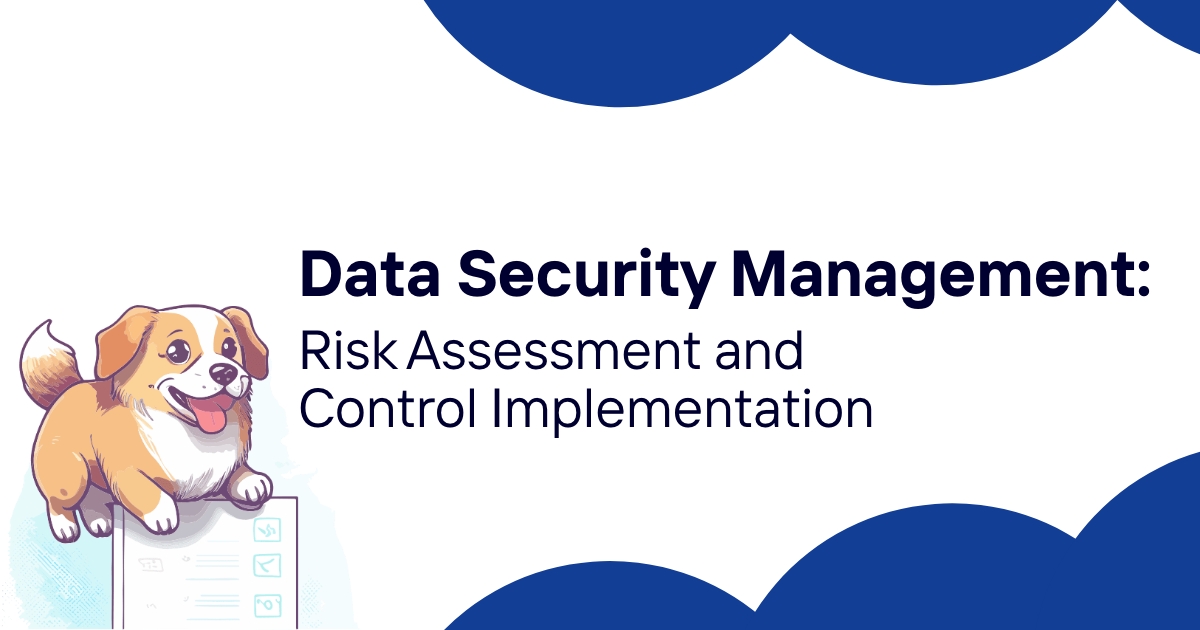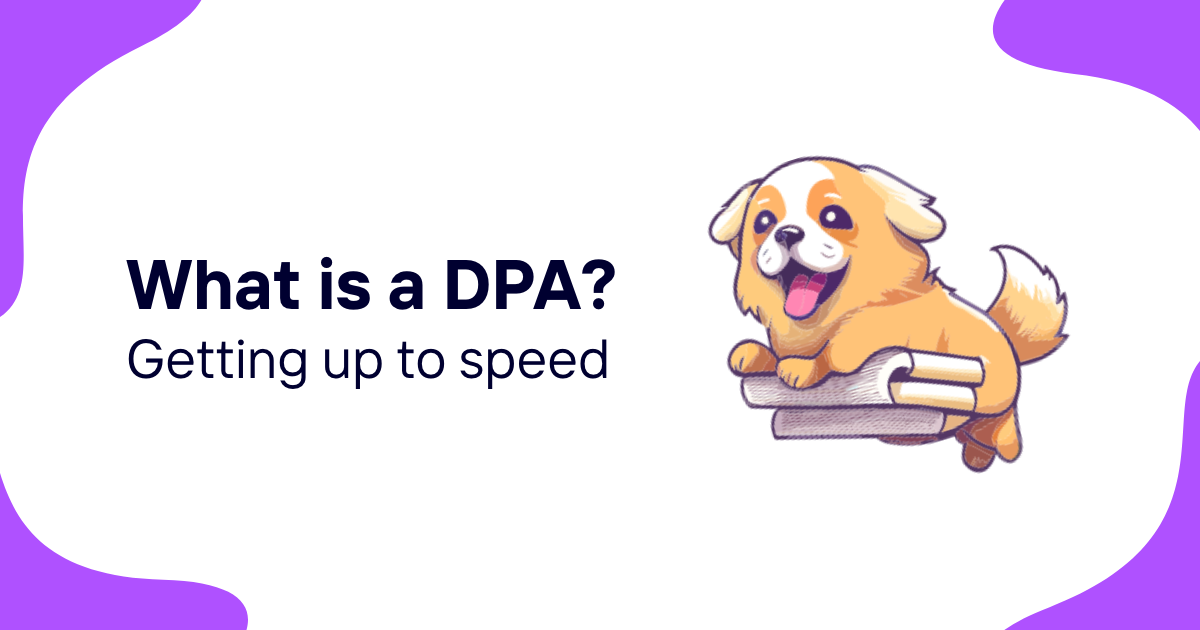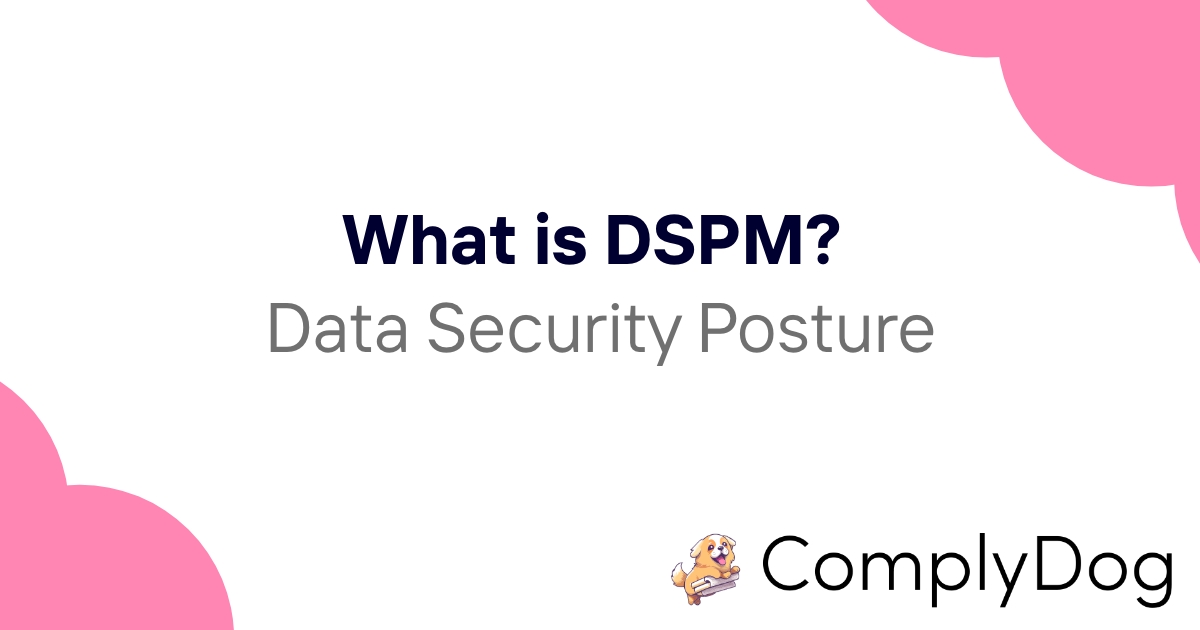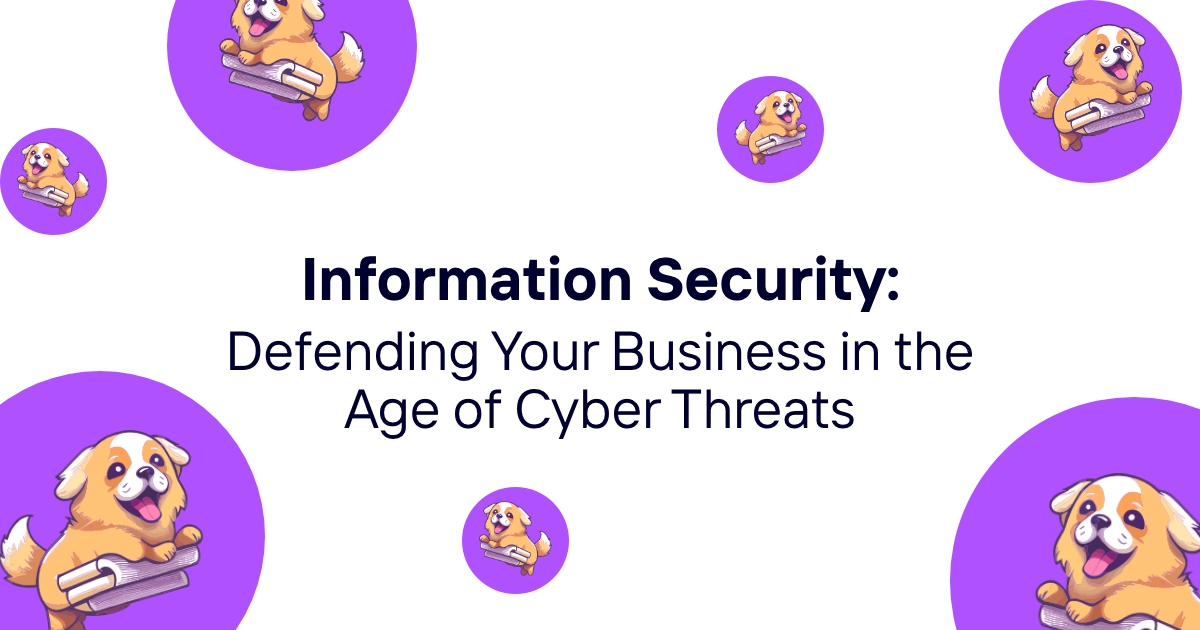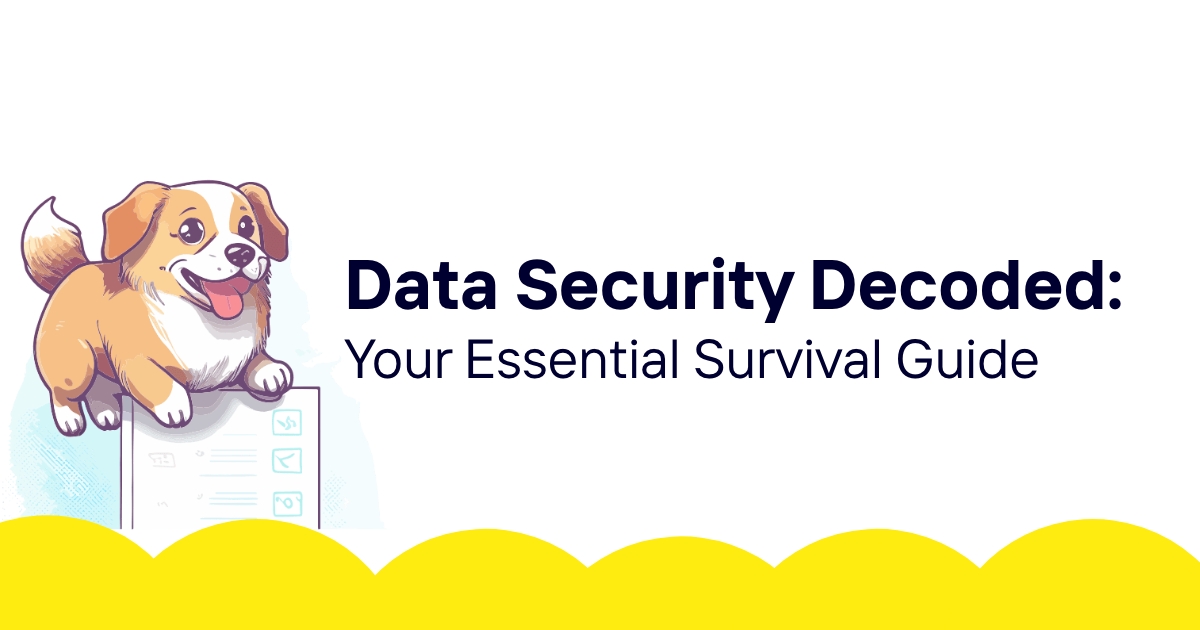Data breaches cost companies an average of $4.45 million per incident. That stark figure represents more than financial loss—it reflects broken customer trust, regulatory penalties, and operational chaos that can take years to rebuild.
Yet most organizations approach data security management like they're playing defense in a game where the rules keep changing. They patch vulnerabilities reactively, implement tools without strategy, and wonder why their security posture feels more like Swiss cheese than a fortress.
The truth is, effective data security management isn't about having the latest tools or the biggest budget. It's about creating systematic approaches that protect information at every stage of its lifecycle while maintaining business agility.
Table of Contents
- What is data security management?
- Core components of data security management
- Data classification and inventory strategies
- Access controls and user management
- Encryption and data protection techniques
- Security monitoring and incident response
- Compliance frameworks and regulatory requirements
- Risk assessment and vulnerability management
- Third-party vendor security management
- Employee training and security awareness
- Business continuity and disaster recovery
- Measuring data security effectiveness
- Common data security management challenges
- Building a data security management program
- Future trends in data security management
- Streamlining compliance with automated solutions
What is data security management?
Data security management encompasses the policies, procedures, and technologies organizations use to protect their information assets from unauthorized access, theft, corruption, or loss. Think of it as the orchestration of multiple security measures working together to create a protective ecosystem around your data.
At its heart, data security management involves three fundamental principles: confidentiality, integrity, and availability (often called the CIA triad). Confidentiality means keeping sensitive information away from unauthorized users. Integrity focuses on maintaining data accuracy and preventing unauthorized modifications. Availability ensures authorized users can access information when needed.
But here's where many organizations stumble: they treat data security as a purely technical challenge. They buy firewalls and encryption software without considering the human elements, business processes, and operational contexts that make security programs succeed or fail.
Effective data security management requires a holistic approach that considers technology, people, and processes as interconnected components. This means understanding not just what data you have, but how it flows through your organization, who needs access to it, and what risks exist at each touchpoint.
Core components of data security management
A robust data security management program rests on several foundational pillars that work in concert to protect organizational assets. These components aren't isolated tools but interconnected systems that strengthen each other when properly implemented.
Data governance forms the backbone of any security program. This involves establishing clear ownership, accountability, and decision-making authority for data assets. Without proper governance, security measures become reactive band-aids rather than proactive protections.
Policy development and enforcement creates the rulebook for how data should be handled throughout its lifecycle. These policies must be specific enough to provide clear guidance while flexible enough to accommodate business needs and technological changes.
Technical controls include the hardware and software solutions that implement security measures. This encompasses everything from network firewalls and intrusion detection systems to encryption tools and access management platforms.
Administrative controls cover the human and procedural aspects of security, including training programs, incident response procedures, and compliance monitoring activities.
Physical security protects the hardware and infrastructure that stores and processes data. Even in cloud-first environments, physical security considerations remain relevant for endpoints, backup media, and facility access.
The interplay between these components determines the overall effectiveness of a data security management program. Strong technical controls can't compensate for weak policies, and excellent procedures mean nothing without proper enforcement mechanisms.
Data classification and inventory strategies
You can't protect what you don't know you have. Data classification and inventory serve as the foundation for all other security activities by providing visibility into an organization's information assets.
Data classification involves categorizing information based on its sensitivity, value, and regulatory requirements. A typical classification scheme might include:
- Public data: Information that can be freely shared without risk
- Internal data: Information meant for internal use but not highly sensitive
- Confidential data: Sensitive information requiring special protection
- Restricted data: Highly sensitive information with strict access controls
The classification process should consider multiple factors: regulatory requirements, business value, potential impact of disclosure, and operational needs. For instance, customer payment information falls under restricted classification due to PCI DSS requirements, while marketing materials might be classified as public.
Data inventory complements classification by mapping where information resides, how it flows through systems, and who has access to it. This process often reveals surprising results—organizations frequently discover sensitive data in unexpected locations or find that access permissions have accumulated over time without proper review.
Automated discovery tools can help identify and classify data across various repositories, but human oversight remains critical. These tools might miss contextual nuances or struggle with unstructured data that requires domain expertise to properly categorize.
| Classification Level | Examples | Protection Requirements |
|---|---|---|
| Public | Marketing materials, job postings | Standard backup and availability |
| Internal | Employee handbooks, internal communications | Access controls and basic monitoring |
| Confidential | Customer lists, financial reports | Encryption, audit trails, need-to-know access |
| Restricted | Payment data, health records | Multi-factor authentication, data loss prevention |
Regular inventory updates are crucial as data landscapes change constantly. New systems get deployed, business processes evolve, and data migration projects can scatter information across previously unknown locations.
Access controls and user management
Access controls determine who can view, modify, or delete specific data assets. These controls form one of the most critical—and most frequently compromised—aspects of data security management.
The principle of least privilege should guide all access decisions: users receive the minimum permissions necessary to perform their job functions, nothing more. This principle sounds straightforward but proves challenging to implement in practice because business requirements often conflict with security best practices.
Role-based access control (RBAC) groups users into roles with predefined permissions. A marketing manager role might include read access to customer demographic data but not payment information. RBAC simplifies administration but can become unwieldy in complex organizations with numerous job functions.
Attribute-based access control (ABAC) makes access decisions based on multiple attributes: user characteristics, resource properties, environmental conditions, and requested actions. ABAC provides more granular control but requires more sophisticated implementation and management.
User lifecycle management addresses how access permissions change as employees join, change roles, or leave the organization. Onboarding processes should provision appropriate access quickly while ensuring proper approval workflows. Role changes require careful review to prevent privilege accumulation. Offboarding must revoke access promptly across all systems.
Regular access reviews help identify permissions that no longer align with job functions. These reviews should happen quarterly for high-privilege accounts and annually for standard users. Automated tools can flag unusual access patterns or dormant accounts that might indicate security risks.
Multi-factor authentication (MFA) adds another layer of protection by requiring multiple forms of verification. While passwords remain the primary authentication method, MFA significantly reduces the risk of account compromise even if credentials are stolen.
Privileged access management (PAM) provides additional controls for high-risk accounts like database administrators or system administrators. PAM solutions typically include features like session recording, approval workflows, and automatic password rotation.
Encryption and data protection techniques
Encryption transforms readable data into an unreadable format that can only be decoded with the proper key. This fundamental security technique protects data both at rest (stored) and in transit (being transmitted).
Symmetric encryption uses the same key for both encryption and decryption. It's fast and efficient for large amounts of data but requires secure key distribution. Advanced Encryption Standard (AES) is the most common symmetric algorithm, with AES-256 providing strong protection for most use cases.
Asymmetric encryption uses paired public and private keys. Data encrypted with the public key can only be decrypted with the corresponding private key. While slower than symmetric encryption, asymmetric methods solve the key distribution problem and enable secure communications between parties who haven't shared keys beforehand.
Hybrid approaches combine both methods: asymmetric encryption protects the symmetric key, which then encrypts the actual data. This approach provides the security benefits of asymmetric encryption with the performance advantages of symmetric methods.
Data at rest encryption protects stored information in databases, file systems, and backup media. Full-disk encryption protects entire storage devices, while database-level encryption provides more granular control over specific tables or columns. Cloud storage encryption has become standard practice, with most providers offering both provider-managed and customer-managed key options.
Data in transit encryption protects information as it moves between systems. Transport Layer Security (TLS) encrypts web traffic, while Virtual Private Networks (VPNs) create encrypted tunnels for broader network communications. Email encryption protects message contents and attachments from interception.
Key management represents one of the most challenging aspects of encryption deployment. Proper key management requires secure generation, distribution, rotation, and destruction of encryption keys. Hardware security modules (HSMs) provide tamper-resistant key storage, while key management services simplify administrative overhead.
The following table outlines common encryption applications and their typical use cases:
| Encryption Type | Common Use Cases | Key Considerations |
|---|---|---|
| Database encryption | Customer records, financial data | Performance impact, key rotation |
| File system encryption | Document storage, backup media | Recovery procedures, key escrow |
| Email encryption | Sensitive communications | User adoption, interoperability |
| Application-level encryption | API communications, data processing | Development complexity, performance |
Encryption isn't a perfect solution. It can impact system performance, complicate data processing, and create operational dependencies on key availability. Organizations must balance security benefits against operational requirements while ensuring encryption implementations actually provide the intended protection.
Security monitoring and incident response
Security monitoring provides continuous visibility into potential threats and suspicious activities across an organization's data infrastructure. Without proper monitoring, security incidents can go undetected for months, increasing damage and recovery costs.
Security Information and Event Management (SIEM) systems collect and analyze log data from various sources to identify potential security incidents. Modern SIEM platforms use machine learning and behavioral analytics to detect anomalies that traditional rule-based approaches might miss.
Key monitoring areas include:
- User activity patterns and access anomalies
- Network traffic flows and communication patterns
- System performance and configuration changes
- Database query patterns and data access volumes
- Application behavior and error rates
But monitoring without response capabilities is like having a smoke detector with no fire department. Incident response procedures define how organizations react when security events occur.
A well-structured incident response plan includes:
- Preparation: Establishing response teams, communication procedures, and technical capabilities
- Identification: Detecting and analyzing potential security incidents
- Containment: Limiting the scope and impact of confirmed incidents
- Eradication: Removing the cause of the incident from affected systems
- Recovery: Restoring normal operations while monitoring for recurrence
- Lessons learned: Analyzing the incident to improve future response
Response time matters significantly in data security incidents. The faster an organization can detect and respond to threats, the less damage typically occurs. Automated response capabilities can help contain incidents outside business hours when human responders might not be immediately available.
Documentation throughout the incident response process serves multiple purposes: it helps coordinate response activities, provides evidence for potential legal proceedings, and creates learning opportunities for improving security measures.
Regular incident response exercises help teams practice their procedures and identify gaps before real incidents occur. These exercises might simulate various scenarios: ransomware attacks, data breaches, system compromises, or insider threats.
Compliance frameworks and regulatory requirements
Data security management doesn't operate in a regulatory vacuum. Organizations must align their security practices with various compliance frameworks and legal requirements that govern data protection.
The General Data Protection Regulation (GDPR) sets strict requirements for organizations processing personal data of EU residents. GDPR requires organizations to implement "appropriate technical and organizational measures" to protect personal data, conduct privacy impact assessments for high-risk processing, and report data breaches within 72 hours.
Other significant regulatory frameworks include:
- HIPAA: Protects health information in the United States
- PCI DSS: Governs payment card data handling
- SOX: Requires financial data controls for public companies
- CCPA: Provides privacy rights for California residents
- ISO 27001: Provides an international standard for information security management
Each framework brings specific requirements, but they share common themes: data minimization, access controls, encryption, monitoring, and breach notification. Organizations operating globally often need to comply with multiple frameworks simultaneously.
Compliance isn't just about avoiding penalties—it provides a structured approach to implementing security controls and can serve as a competitive advantage when customers evaluate vendors. However, compliance should be viewed as a minimum baseline rather than a complete security program.
Risk-based approaches help organizations allocate resources effectively across compliance requirements. Not all data requires the same level of protection, and compliance frameworks generally recognize this through risk assessment requirements and scaled control implementations.
Regular compliance audits help identify gaps and demonstrate due diligence to regulators and customers. Internal audits can catch issues before external assessments, while third-party audits provide independent validation of compliance efforts.
Risk assessment and vulnerability management
Risk assessment forms the foundation for making informed decisions about security investments and priorities. Without understanding the likelihood and potential impact of various threats, organizations might waste resources protecting low-risk assets while leaving high-risk vulnerabilities exposed.
The risk assessment process typically involves:
- Asset identification: Cataloging information assets and their business value
- Threat identification: Understanding potential sources of harm
- Vulnerability assessment: Identifying weaknesses that threats could exploit
- Impact analysis: Estimating consequences if threats materialize
- Likelihood estimation: Evaluating the probability of threat occurrence
- Risk calculation: Combining impact and likelihood to prioritize risks
Quantitative risk assessments attempt to assign monetary values to risks, enabling cost-benefit analysis of security investments. Qualitative assessments use categorical ratings (high, medium, low) that may be easier to understand but provide less precision for decision-making.
Vulnerability management complements risk assessment by providing ongoing identification and remediation of security weaknesses. This process includes:
Regular vulnerability scanning using automated tools that probe systems for known security flaws. These scans should cover network infrastructure, operating systems, applications, and databases.
Penetration testing simulates real-world attacks to identify vulnerabilities that automated tools might miss. Penetration tests should be conducted by skilled professionals who can think like attackers and identify complex attack chains.
Vulnerability remediation prioritizes fixes based on risk levels rather than just severity scores. A critical vulnerability in an isolated system might pose less risk than a medium-severity flaw in a customer-facing application.
The following matrix helps prioritize vulnerability remediation efforts:
| Risk Level | Exploitation Likelihood | Business Impact | Remediation Timeframe |
|---|---|---|---|
| Critical | High | High | Immediate (24-48 hours) |
| High | High | Medium or Medium | High |
| Medium | Medium | Medium | 1 month |
| Low | Low | Any or Any | Low |
Zero-day vulnerabilities present special challenges because no patches exist when they're discovered. Organizations need procedures for handling these situations, which might include temporary workarounds, increased monitoring, or service isolation.
Third-party vendor security management
Modern organizations depend heavily on third-party vendors for technology services, data processing, and business operations. This dependency creates security risks that extend beyond an organization's direct control but remain their responsibility to manage.
Vendor risk assessment should begin before contract signing. Organizations need to evaluate potential vendors' security practices, compliance certifications, incident history, and financial stability. This evaluation helps identify risks early and establish appropriate contract terms.
Due diligence questionnaires help standardize vendor security assessments. These questionnaires should cover areas like:
- Information security policies and procedures
- Access controls and user management
- Data encryption and protection measures
- Incident response capabilities
- Business continuity and disaster recovery plans
- Compliance certifications and audit results
- Insurance coverage and financial stability
Security certifications provide third-party validation of vendor security practices. Common certifications include SOC 2 Type II, ISO 27001, and industry-specific standards like HITRUST for healthcare vendors. While certifications don't guarantee perfect security, they indicate that vendors have implemented recognized security frameworks.
Contract terms should clearly define security expectations, data handling requirements, breach notification procedures, and audit rights. Service Level Agreements (SLAs) should include security metrics alongside availability and performance measures.
Ongoing vendor monitoring helps identify changes in risk profiles over time. This monitoring might include:
- Regular security questionnaire updates
- Review of new audit reports and certifications
- Monitoring of security incidents or breaches
- Assessment of vendor financial health
- Evaluation of vendor security tool changes or updates
Vendor offboarding procedures ensure that access is revoked and data is returned or destroyed when vendor relationships end. These procedures should be defined in contracts and tested periodically to ensure they work as expected.
Fourth-party risk (vendors' vendors) presents additional challenges as organizations have limited visibility into these relationships. Contract terms should require vendors to manage their own third-party risks and notify customers of material changes in subcontractor relationships.
Employee training and security awareness
People often represent the weakest link in security programs, but they can also become the strongest defense when properly trained and engaged. Security awareness training helps employees recognize threats, understand their responsibilities, and respond appropriately to security incidents.
Effective security training programs move beyond generic presentations to provide relevant, engaging content that resonates with different roles and responsibilities. Marketing employees need different training than finance staff or IT administrators.
Social engineering attacks target human psychology rather than technical vulnerabilities. Phishing emails, pretexting phone calls, and physical tailgating attempts rely on manipulating people into providing unauthorized access or information.
Training topics should include:
- Password security and multi-factor authentication
- Email and web browsing safety
- Physical security awareness
- Social media and privacy considerations
- Incident reporting procedures
- Mobile device and remote work security
- Data handling and classification requirements
Simulated phishing campaigns provide hands-on learning opportunities while identifying employees who need additional training. These campaigns should be educational rather than punitive, focusing on building awareness rather than catching people making mistakes.
Microlearning approaches deliver security training in small, digestible segments that fit into busy schedules. Short videos, interactive modules, or brief newsletters can reinforce key concepts without overwhelming employees.
Role-specific training addresses the unique security challenges faced by different job functions. Executives might focus on business email compromise and board governance responsibilities, while developers need secure coding practices and threat modeling techniques.
Security culture development goes beyond formal training to create an environment where security is valued and supported. This includes leadership commitment, clear communication about security priorities, and recognition programs that reward good security behavior.
Regular security awareness assessments help measure program effectiveness and identify areas for improvement. These assessments might include knowledge tests, simulated attacks, or surveys about security attitudes and behaviors.
New employee onboarding should include security training as a standard component. Employees are most receptive to training when they first join an organization, and early training helps establish good security habits.
Business continuity and disaster recovery
Data security management must account for scenarios where security controls fail, systems become unavailable, or major incidents disrupt normal operations. Business continuity and disaster recovery planning helps organizations maintain operations and recover quickly from various types of disruptions.
Business continuity planning identifies critical business functions and the minimum resources needed to maintain operations during disruptions. This planning process should consider various scenarios: natural disasters, cyberattacks, pandemic restrictions, supply chain disruptions, and key personnel unavailability.
Recovery time objectives (RTOs) define how quickly systems and processes must be restored after an incident. Recovery point objectives (RPOs) specify the maximum acceptable data loss during recovery. These objectives guide investment decisions about backup systems, redundancy, and recovery procedures.
Data backup strategies form the foundation of most recovery plans. Organizations need multiple backup copies stored in different locations using the 3-2-1 rule: three copies of important data, stored on two different media types, with one copy stored off-site.
Cloud-based backup and recovery services provide scalable, cost-effective options for most organizations. However, cloud services create dependencies that must be managed as part of the overall business continuity strategy.
Testing and maintenance of business continuity plans helps identify gaps and ensures procedures work when needed. Tabletop exercises simulate various scenarios without actually triggering recovery procedures. Partial tests might recover specific systems or processes, while full-scale tests simulate complete disaster scenarios.
Communication plans define how organizations will coordinate response activities and communicate with stakeholders during incidents. These plans should include multiple communication channels and account for scenarios where primary communication systems might be unavailable.
Supply chain continuity considers how disruptions might affect vendors and service providers. Organizations should identify critical vendors and develop contingency plans for maintaining operations if these vendors become unavailable.
Measuring data security effectiveness
Security programs need metrics to demonstrate value, identify improvement opportunities, and guide resource allocation decisions. However, measuring security effectiveness presents unique challenges because success often means that nothing bad happened.
Leading indicators help predict future security outcomes based on current activities. These metrics might include:
- Percentage of systems with current security patches
- Employee completion rates for security training
- Average time to resolve security vulnerabilities
- Number of security policies reviewed and updated
- Frequency of security awareness communications
Lagging indicators measure the results of security activities after they occur:
- Number of security incidents by type and severity
- Mean time to detect and respond to security incidents
- Cost of security incidents including response and recovery
- Compliance audit findings and remediation status
- Customer trust metrics and reputation surveys
Balanced scorecards provide a comprehensive view of security program performance by combining multiple types of metrics across different perspectives: financial, operational, customer, and innovation/learning.
Risk-based metrics align measurement activities with business priorities by focusing on the security outcomes that matter most to the organization. These metrics might track risk reduction over time or measure the effectiveness of controls protecting high-value assets.
Benchmarking against industry standards helps organizations understand their security posture relative to peers. Various industry groups and government agencies publish security metrics and benchmarks that can provide useful comparison points.
Regular reporting to executive leadership and the board of directors helps maintain visibility and support for security programs. These reports should balance technical details with business impact to help non-technical stakeholders understand security program value.
The following table shows examples of security metrics organized by category:
| Metric Category | Example Metrics | Measurement Frequency |
|---|---|---|
| Operational | Mean time to patch critical vulnerabilities | Monthly |
| Risk | Number of high-risk findings from assessments | Quarterly |
| Compliance | Percentage of systems meeting policy requirements | Monthly |
| Financial | Security spending as percentage of IT budget | Quarterly |
| Effectiveness | Percentage of phishing simulations clicked | Monthly |
Metrics should drive action rather than just provide information. Organizations need processes for reviewing metrics, identifying trends, and implementing improvements based on measurement results.
Common data security management challenges
Even well-intentioned organizations face recurring challenges when implementing data security management programs. Understanding these common obstacles helps organizations prepare for and address them proactively.
Resource constraints affect most security programs. Organizations often lack sufficient budget, skilled personnel, or executive support to implement comprehensive security measures. This challenge requires prioritization based on risk and creative approaches to maximize limited resources.
Competing business priorities can create tension between security requirements and operational needs. Business units might resist security controls that slow down processes or complicate user experiences. Successful programs find ways to align security measures with business objectives.
Complexity and scale present ongoing challenges as organizations grow and technology environments expand. Managing security across multiple cloud platforms, hybrid infrastructure, and diverse application portfolios requires sophisticated tools and processes.
Skills shortage in cybersecurity affects organizations of all sizes. Finding qualified security professionals remains difficult, and existing staff often struggle to keep up with evolving threats and technologies. Training programs and managed security services can help address skill gaps.
Legacy systems create security challenges because they often lack modern security features and can't easily be updated or replaced. Organizations need strategies for managing legacy system risks while planning for eventual modernization.
Shadow IT occurs when business units deploy technology solutions without IT oversight. These unauthorized systems often lack proper security controls and create visibility gaps that complicate security management.
Regulatory complexity increases as organizations operate across multiple jurisdictions with different privacy and security requirements. Keeping up with regulatory changes and ensuring compliance across various frameworks requires dedicated effort.
Third-party dependencies create risks that organizations can influence but not fully control. Managing vendor relationships and ensuring appropriate security standards across complex supply chains requires ongoing attention.
Change management challenges arise when security programs must adapt to business changes, new technologies, or evolving threats. Organizations need agile approaches that can respond to change while maintaining security posture.
Budget justification for security investments can be difficult because the value of prevented incidents is hard to quantify. Security leaders need to develop business cases that connect security activities to business outcomes.
Building a data security management program
Creating an effective data security management program requires systematic planning and phased implementation. Organizations should start with foundational elements and build complexity over time rather than attempting to implement everything simultaneously.
Program governance establishes the organizational structure and authority needed to implement and maintain security measures. This includes defining roles and responsibilities, establishing decision-making processes, and creating accountability mechanisms.
Leadership commitment from the highest levels of the organization is crucial for program success. Executives must provide not just budget approval but active support for security initiatives, especially when they create inconvenience or conflict with other priorities.
Maturity assessment helps organizations understand their current security posture and identify improvement priorities. Various maturity models provide structured approaches for evaluating security capabilities and planning evolution paths.
Phased implementation allows organizations to build security programs incrementally while demonstrating value along the way. Early phases might focus on basic hygiene measures like asset inventory and patch management, while later phases address advanced capabilities like threat hunting and predictive analytics.
Policy framework development creates the foundation for consistent security practices across the organization. Policies should be comprehensive enough to provide clear guidance while remaining flexible enough to accommodate business needs and technological changes.
Technology selection should align with program objectives and organizational capabilities rather than following the latest trends. Organizations need to balance functionality, cost, complexity, and integration requirements when selecting security tools.
Staff development addresses the people side of security programs through hiring, training, and retention strategies. Organizations might need to develop internal capabilities, partner with managed service providers, or use hybrid approaches.
Communication and change management help ensure that security programs gain acceptance and support throughout the organization. This includes explaining the business rationale for security measures and providing training and support for new processes.
Continuous improvement processes help programs evolve in response to changing threats, business requirements, and technology capabilities. Regular assessments, metrics reviews, and stakeholder feedback provide input for program enhancements.
Success criteria should be defined early and revisited regularly to ensure programs remain aligned with organizational objectives. These criteria should include both security outcomes and business metrics that demonstrate program value.
Future trends in data security management
Data security management continues to evolve as new technologies, threats, and business models emerge. Organizations need to anticipate these trends to prepare their security programs for future challenges and opportunities.
Artificial intelligence and machine learning are transforming both security capabilities and threat landscapes. AI-powered security tools can analyze vast amounts of data to identify patterns and anomalies that human analysts might miss. However, attackers are also using AI to create more sophisticated and targeted attacks.
Zero trust architecture assumes that threats exist both inside and outside traditional network perimeters. This approach requires verification for every access request regardless of location or user identity. Zero trust implementations often involve significant changes to network design, identity management, and monitoring capabilities.
Privacy-enhancing technologies help organizations use data while maintaining privacy protections. Techniques like differential privacy, homomorphic encryption, and secure multi-party computation enable data analysis without exposing individual records.
Quantum computing presents both opportunities and threats for data security. While quantum computers could break current encryption methods, they also enable new forms of quantum-safe cryptography that provide enhanced protection.
Edge computing distributes data processing closer to where information is generated and used. This trend creates new security challenges as organizations must protect data across more distributed and potentially less controlled environments.
Regulatory evolution continues as governments worldwide develop new privacy and security requirements. Organizations need to monitor regulatory developments and prepare for additional compliance obligations.
Supply chain security is receiving increased attention following high-profile attacks that leveraged third-party relationships. Organizations are implementing more rigorous vendor assessment and monitoring processes.
DevSecOps integration builds security into software development processes from the beginning rather than adding it at the end. This approach helps organizations develop more secure applications while maintaining development velocity.
Automation and orchestration help organizations manage security at scale by reducing manual effort and enabling faster response to threats. Security orchestration platforms can coordinate responses across multiple tools and systems.
Behavioral analytics focus on detecting anomalous user and system behavior rather than just looking for known attack signatures. These approaches can help identify insider threats and advanced persistent threats that traditional security tools might miss.
Streamlining compliance with automated solutions
Managing data security across complex regulatory landscapes requires sophisticated tools and processes that can adapt to changing requirements while maintaining operational efficiency. Organizations increasingly turn to automated compliance solutions to reduce manual effort and improve accuracy.
Automated compliance platforms can continuously monitor systems and processes against regulatory requirements, generating reports and alerts when gaps are identified. These solutions help organizations maintain compliance posture between formal audits while reducing the administrative burden on staff.
ComplyDog provides an integrated approach to GDPR compliance that addresses many of the data security management challenges discussed in this article. The platform automates data mapping, consent management, and breach notification processes while providing the audit trails and documentation needed for regulatory compliance.
By centralizing compliance activities within a single platform, organizations can reduce the complexity and cost of managing multiple regulatory requirements. Automated tools can also help smaller organizations access enterprise-grade compliance capabilities without requiring large internal teams or extensive technical expertise.
The future of data security management lies in platforms that combine technical security controls with regulatory compliance management, providing organizations with comprehensive protection that adapts to evolving threats and requirements. Solutions like ComplyDog demonstrate how automated compliance tools can streamline complex processes while maintaining the rigor and documentation needed for regulatory success.
Data security management will continue to evolve as new technologies and threats emerge, but organizations that build strong foundations based on the principles outlined in this article will be better positioned to adapt and thrive in the changing security landscape.
